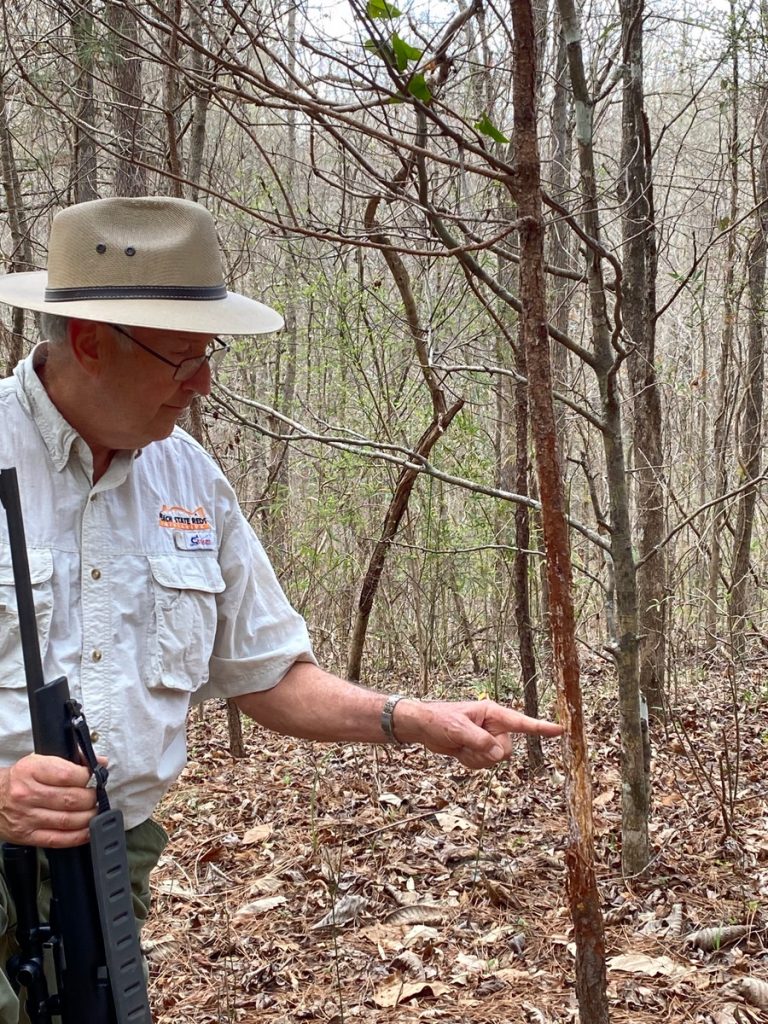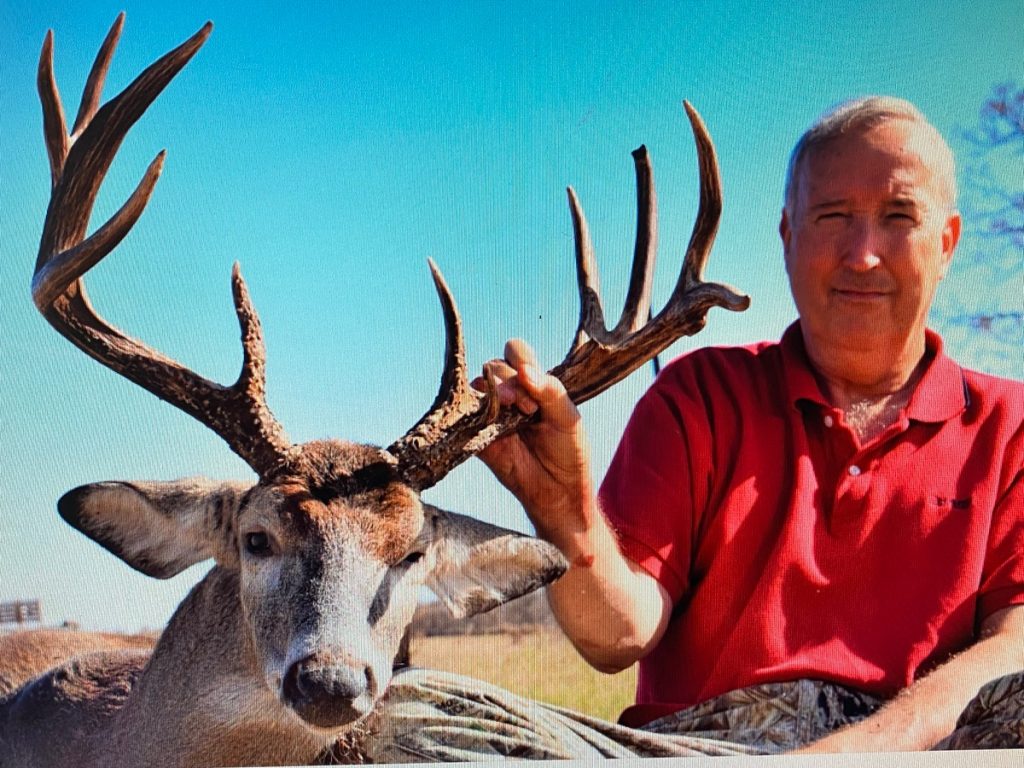The key to bagging big bucks!
Fall 2025
By John Trussell
Photos courtesy of the author
The fall deer season is now in full swing and the more time you spend in the woods, the better chances you’ll have to tag a good buck or some does for the freezer. Understanding the rut, will help you to pinpoint key deer locations and be a successful hunter. The rut consists of several phases extending over three to four months, starting with sparring activity among bucks and ending after breeding.
Photoperiods (the relative lengths of alternating periods of lightness and darkness that affect the growth and maturity of the deer) are the factors most responsible for triggering rutting behavior.In late August and early September in the Southeast, bucks begin to remove the velvet from the antlers as it begins to flake out naturally.
Regardless of the timing of the rut in your area, the characteristics are the same. Two distinct types of visual and olfactory signposts are displayed by bucks during courtship and breeding periods.
“Buck rubs” are stems of shrubs or saplings debarked by bucks rubbing them with their antlers and head. Generally, small bucks rub small saplings, while larger and stronger bucks select larger saplings to rub. The forehead skin contains glands that become more active during the breeding season and leave scent on the objects rubbed. Occasionally a buck will break a sapling when rubbing escalates into vigorous thrashing. Rubbing is most intense during and shortly after velvet removal, but continues throughout the rut. Rubs can function as communication between the sexes, as does sometimes sniff, lick or even mark buck rubs with their foreheads.

Bucks usually rub the velvet off their antlers in the early fall, which also marks their territory.
The saplings also serve as whipping posts for young bucks to test their strength. Tree rubs give hunters a good indication of the location of bucks during the archery season and a string of rubs or a concentration in one area should give you some strong indications as to where you can locate your stand.
Be aware, however, that by the time the fall rut is underway in mid-November, tree rubs’ importance decreases because deer movements and food sources have probably changed. Basically, although bucks may rub trees throughout the rut, the majority of rubs occur early in the season.
A “buck scrape” usually consists of a broken twig or branch above the ground with a depression pawed in the soil directly beneath it. In making a scrape a buck first reaches up into a tree or bush, sometimes standing on his hind legs, and mouths and pulls the end of a branch down, frequently breaking it. The buck then releases the branch, allowing it to spring back across his forehead. Following this he paws and scrapes free of litter a shallow depression beneath the branch, into which he generally urinates.
Scrapes appear primarily during courtship and breeding periods, and clearly function as signposts. Whitetail bucks may return to scrapes and freshen them or make other scrapes nearby. Does also visit scrapes to check them out. A buck locating the scent of a doe at or near a scrape will often trail her at a fast walk with his nose near the ground, making a characteristic grunting sound.
Both marking routines also serve as threat displays. Threatening bucks sometimes pause to thrash a bush before facing each other again. A behavioral pattern often associated with rubbing and scraping involves the buck urinating on his tarsal glands while rubbing them together. This is referred to as “urine marking”, “scenting”, or “rub-urination”, and produces a strong, far-reaching odor to intimidate other bucks. Urine marking probably serves to attract does, but undoubtedly also has other social functions.
Without a doubt, the rut is the best time to deer hunt because deer become preoccupied with the breeding function and are less concerned with food, sleep or predators. This gives the hunter a better chance of success in the woods.
This fact, along with being at the right place at the right time, has allowed me and many average Georgia deer hunters, the chance to bag some nice bucks. Many times, I have had does being chased by bucks run by me during the rut, and that really gets my attention! Then only a short time later a buck would come by, his nose to the ground, grunting and in hot pursuit of the doe that did not want to be caught. The buck is distracted and is focused on the doe, not the scent of hunters in the woods.
A few years ago, I had located an active scrape line in the woods that was being tended by a buck on a frequent basis because there were no leaves in the scrapes. The next day I set up a ground blind near the location, keeping in mind topography and wind currents. Shortly after dawn, a huge 8-pointer walked by so silently I neither saw nor heard him until he was within 20 feet. The buck was checking his scrape line in hopes that a willing doe would come by.
He was unaware of my presence, and I was afraid to move. I let him walk on by because I was unable to get a clear shot. I thought my chance at the buck was over! But the deer walked to the end of his scrape line, which was on a finger of land that dropped off into a thick swamp that was 100 yards past my location, and then turned around. Even though my scent was blowing to the deer, he came by me again, but this time I was ready and dropped the rutting buck with a 150-grain slug through the chest. I’m sure that if the rut had not been in progress, I would never have collected that buck.

The author dropped his largest buck as it was following a doe during the rut in Macon County. The rack scored 144 Boone and Crockett non-typical points.
The rut normally occurs in the Georgia during early to mid-November, but there are variations. Along coastal areas, the rut occurs earlier, from mid- to late-October. In southwest Georgia, it doesn’t peak until Late-December. The Georgia DNR has complied a great rut map for Georgia, to view it click here.
John Trussell is a freelance writer making his home in Warner Robins. He is a member of the Georgia Outdoor Writers Association and a 2014 inductee into the Georgia Hunting and Fishing Hall of Fame.